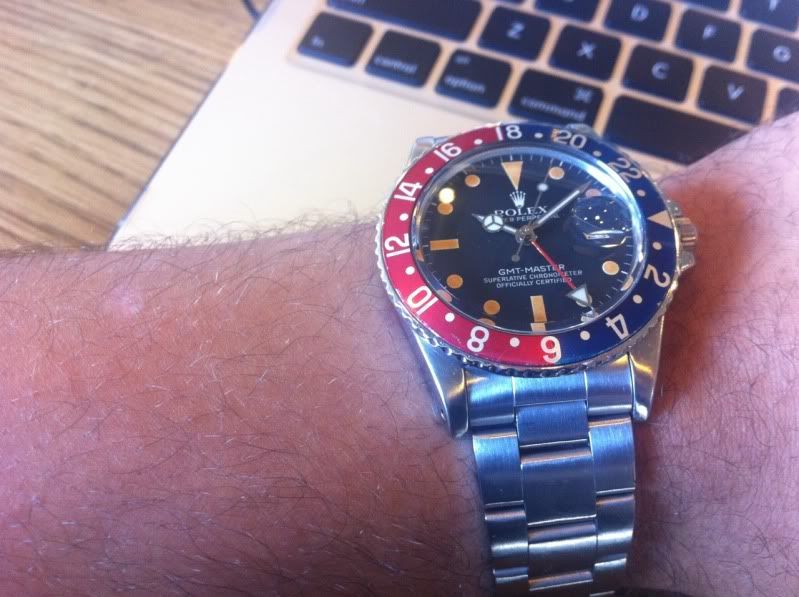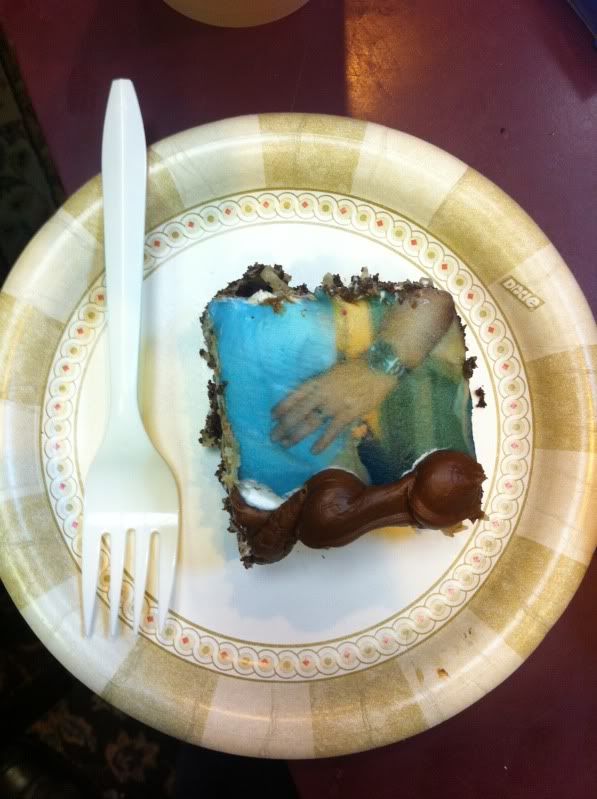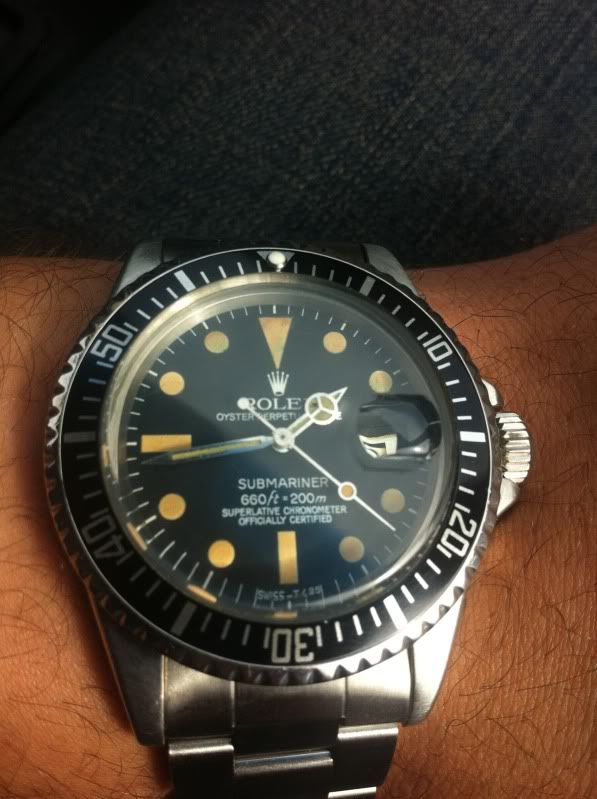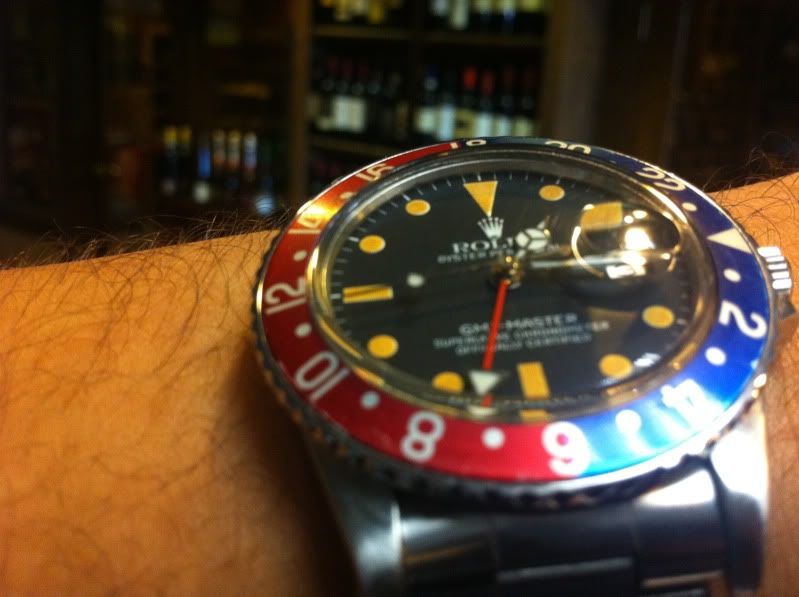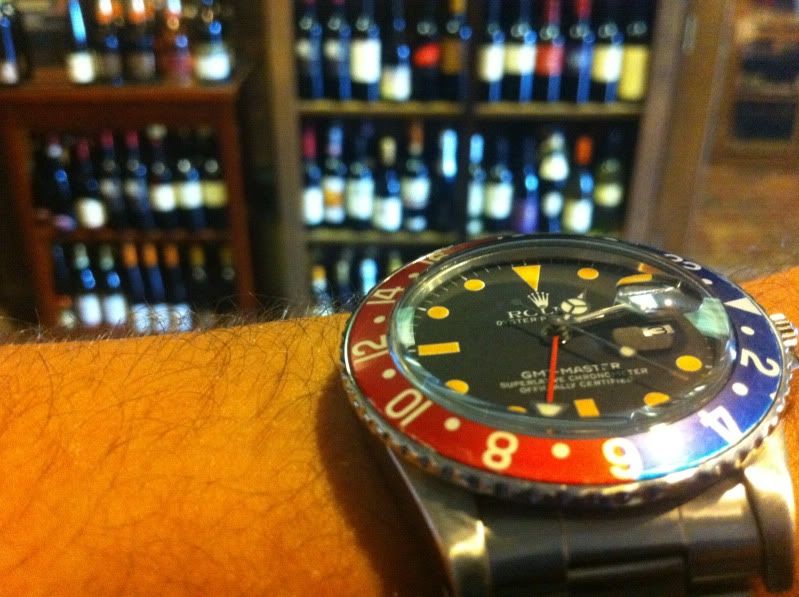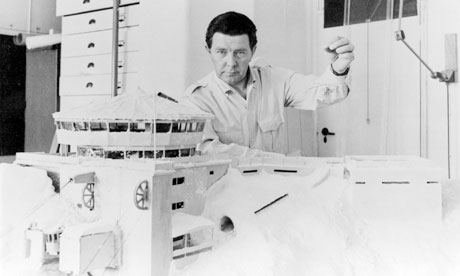Syd Cain at Pinewood Studios with the model used in the explosive climax to On Her Majesty’s Secret Service (1969). Photograph: 007magazine.com
The production designer Syd Cain, who has died aged 93, was one of many behind-the-scenes professionals elevated to something like prominence by the worldwide interest in the
James Bond films. An industry veteran who began work in British cinema as a draughtsman in 1947, contributing to the look of the gothic melodrama Uncle Silas, Cain is credited on a range of film and television projects, but remains best known for his work in various design capacities on the 007 series, from Dr No in 1962 to GoldenEye in 1995.
Born in Grantham, Lincolnshire, Cain served in the armed forces in the second world war, surviving a plane crash and recovering from a broken back. Working at Denham Studios in Buckinghamshire in the 1940s and 50s, he moved up from uncredited draughtsman (on Adam and Evelyne, The Interrupted Journey, You Know What Sailors Are and Up to His Neck) to assistant art director (for The Gamma People, Fire Down Below, Interpol, How to Murder a Rich Uncle and The World of Suzie Wong). During this time, he developed a habit of slipping his name on to the screen among documents provided as props. In Carol Reed's Our Man in Havana (1959), where the blueprints for a vacuum cleaner are mistaken for rocket secrets, he is listed on the papers as the designer of the device. His first credit as art director was on The Road to Hong Kong (1962), the British-produced last gasp of the series of Bob Hope/Bing Crosby comedies. Cain also worked on the Hope vehicle Call Me Bwana (1963), best remembered because of an in-joke reference to it in From Russia With Love, where a sniper is concealed behind a billboard advertising the film.
Having worked as a draughtsman on Hell Below Zero (1954) and assistant art director on The Cockleshell Heroes (1956), both produced by Albert R Broccoli, he was chosen by Broccoli to work on the Bond films. Though uncredited, he worked with the production designer Ken Adam – in whose shadow he modestly remained for much of his career – on Dr No, taking over as art director when Adam was not available for the immediate follow-up, From Russia With Love (1963). This was the film that introduced the character of Q (
Desmond Llewelyn). Cain was responsible for the design of the gadgets issued to Sean Connery's Bond, notably the briefcase with concealed sniper rifle and tear-gas talcum tin. For the villains, Cain also provided Rosa Klebb's shoes, with poison-tipped blade, and the chess-themed decor of Blofeld's lair.
Later, he was production designer for On Her Majesty's Secret Service (1969). With a new Bond (George Lazenby) and a move away from the gadgets and vast sets of Connery and Adam's later work, Thunderball and Goldfinger, this tried to seem less fantastical – the only contraption issued to Bond is a photocopier. Cain was the supervising art director on Roger Moore's first Bond film, Live and Let Die (1973), then left the series, eventually returning as a storyboard artist for Pierce Brosnan's 007 debut, GoldenEye.
Arguably more impressive than his Bond associations, Cain worked with a number of notable film-makers throughout the 1960s and 70s, as assistant art director for Stanley Kubrick (Lolita, 1962), art director for Ronald Neame (Mister Moses, 1965) and François Truffaut (Fahrenheit 451, 1966), executive art director for Richard Lester (A Funny Thing Happened on the Way to the Forum, 1966) and production designer for
Ken Russell (Billion Dollar Brain, 1967), Alfred Hitchcock (Frenzy, 1972) and Jack Gold (Aces High, 1976).
Contributing to lasting British pop-culture artefacts, he was also art director on the Cliff Richard vehicle Summer Holiday (1963) and production designer of the revival series The New Avengers (1976). After the popular, action-oriented Alistair Maclean adventure Fear Is the Key (1973), Cain became associated with a brand of high adventure that grew out of the Bond films, working with Peter R Hunt (director of On Her Majesty's Secret Service) on the Moore movies Gold (1974) and Shout at the Devil (1976), both set in Africa, and with the producer Euan Lloyd on a series of boozy, British macho epics – The Wild Geese (1978), The Sea Wolves (1980) and Who Dares Wins (1982).
Cain retired as a production designer after Tusks (1988), but contributed storyboards to a select run of high-profile films, including Who Framed Roger Rabbit (1988). His final credit was on the Michael Caine boxing movie Shiner (2000). In retirement, he illustrated children's books, wrote an autobiography (Not Forgetting James Bond: The Autobiography of James Bond Production Designer Syd Cain, 2002) and was a well-liked guest at Bond-themed fan events.
Cain was married twice. His five sons and three daughters survive him.
• Sidney Cain, production designer, art director and illustrator, born 16 April 1918; died 21 November 2011




















